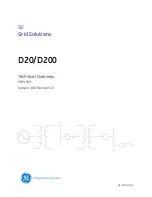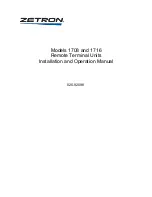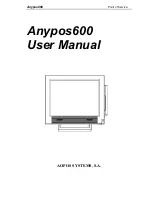
4. Configuration
85
MODBUS Server Protocol:
The limit (²) regards the Ethernet interfaces that limit the number of
connections that can be made to other devices via the same Ethernet interface. It is not necessary,
nor possible, declare or configure the Clients under the instance of the MODBUS Server
protocol. All Client devices will have access to all mappings made directly on the instance of
MODBUS Server protocol.
DNP3 Server Protocol:
Amount of client devices (control center), supported by each instance of
the DNP3 Server protocol. The limit (³) informed may be lower depending on the CPU total
limits (See Table 4-28).
Protocolo Servidor IEC 60870-5-104:
Amount of client devices (control center), supported by
each instance of the IEC 60870-5-104 Server protocol. The limit
(4)
informed may be lower
dependi non the CPU total limits (See Table 4-28).
Requests per device:
Number of requests, such as reading or writing of holding registers, which can
be configured for each one of the devices (slaves or servers) of Master or Client protocols instances.
This parameter is not applicable (NA) to instances of Slave or Server protocols
Requests per instance:
A soma das requisições configuradas em cada um dos dispositivos de uma
instância Mestre ou Cliente não pode ultrapassar este limite.
Simultaneous requests per instance:
Number of requests that can be simultaneously transmitted by
each Client protocol instance or that can be received simultaneously by each Server protocol
instance. Instances of MODBUS RTU, Master or Slave protocols do not support simultaneous
requests.
Simultaneous requests per device:
Number of requests that can be simultaneously transmitted for
each MODBUS Server device or may be simultaneously received from each MODBUS Client
device. MODBUS RTU devices (Master or Slave) and DNP3 devices (Client or Server), do not
support simultaneous requests.
ATTENTION:
Simultaneous requests are not supported for the same variable,associated to communication points,
which support the SBO (Select Before Operate) operation mode , even being received by different
devices. Once started the selection and/or operation of a point by a device, this must be concluded
before that point become available to another device.Behavior of the Protocols x CPU States
Table 4-29 shows in details the behavior of each communication protocol that the CPU HX3040 has
in all its operational states. It also presents a legend specifying further information:
Protocol
Type
CPU Operational State
STOP
RUN
After download;
before the
application
startup
After the
application
goes into
STOP
(PAUSE)
After an
exception
Non-
redundant
or Active
Redundant
in Stand-by
After a
breakpoint
in MainPrg
MODBUS
Slave/Server
Master/Client
DNP3
Outstation
Master
IEC 104
Server
MMS
Server
GOOSE
Publisher
Subscriber
SNTP
Client
HTTP
Server
IRIG-B
Transmitter
Receiver
Table 4-29. Behavior of the Protocols x CPU States
















































